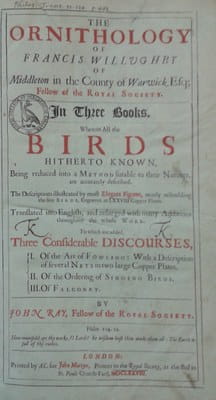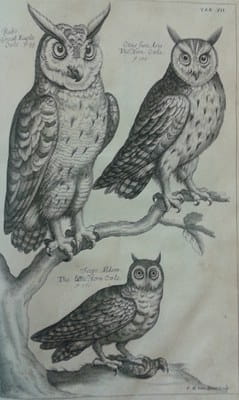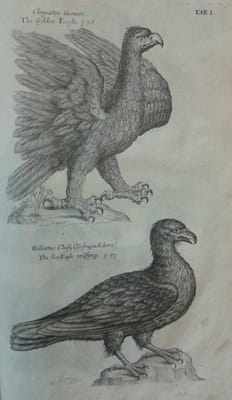History Of Classification Quick Check
We can go back all the way to Aristotle in 300 or so B.C. who classified almost 125 dissimilar birds on the ground of their habitat. This was a common fashion of classification for many years. Throughout the middle ages and the renaissance there were diverse schemes for classifying birds – habitat, beak, color, legs, etc. But most names were based on something other than the human relationship of birds to each other. There was no photography until the mid 1800's and then descriptions of birds were based on written texts or illustrations of some sort. Many of these illustrations were either inaccurate, or just fanciful. In the 17th century, when explorers were bringing exotic birds from all corners of the earth, illustrations got better – many realistic paintings were being created. Only classification was still crude and generally incorrect. One problem was that at that place was no good style to preserve bird specimens, and then leaner and insects destroyed them quickly. It wasn't until the 18th century that ways of preserving skins were developed. Until the early on 20th century, arsenic was used in many preparations, leading to the death of a few museum workers, including the famous ornithologist John Cassin.
Later, taxidermy became common and so birds could be put in lifelike poses for artists to sketch. Audubon, before taxidermy came nearly, shot birds and mounted them on wire frames in realistic poses.

I'm going to skip over a lot of detail nearly nomenclature schemes and get correct to the first real scientific classification of birds, that of The Ornithology of Francis Willoughby. (Also spelled Willughby.)
I have taken the below information from The Royal Higher of Surgeons.

Ray and Willoughby met while attention Trinity College in Cambridge and were brought together by their shared interest in the history of nature. Willoughby focused on animals, birds and fish, while Ray had a greater interest in botany. They spent some time travelling together through Europe documenting their findings.


Unfortunately, Willoughby was not to live to see his work in print. He died suddenly in 1672 leaving Ray with his notes and observations and a sixty pound annuity. Although Ray's passion lay in plants, he took on the work of his late friend putting together and publishing the book four years subsequently."
Sarah Kennedy, Collections Review Assistant
For item on avian classification, Wikipedia has a very thorough article.
History Of Classification Quick Check,
Source: https://ornithology.com/quick-history-of-classification/
Posted by: branchingents.blogspot.com


0 Response to "History Of Classification Quick Check"
Post a Comment